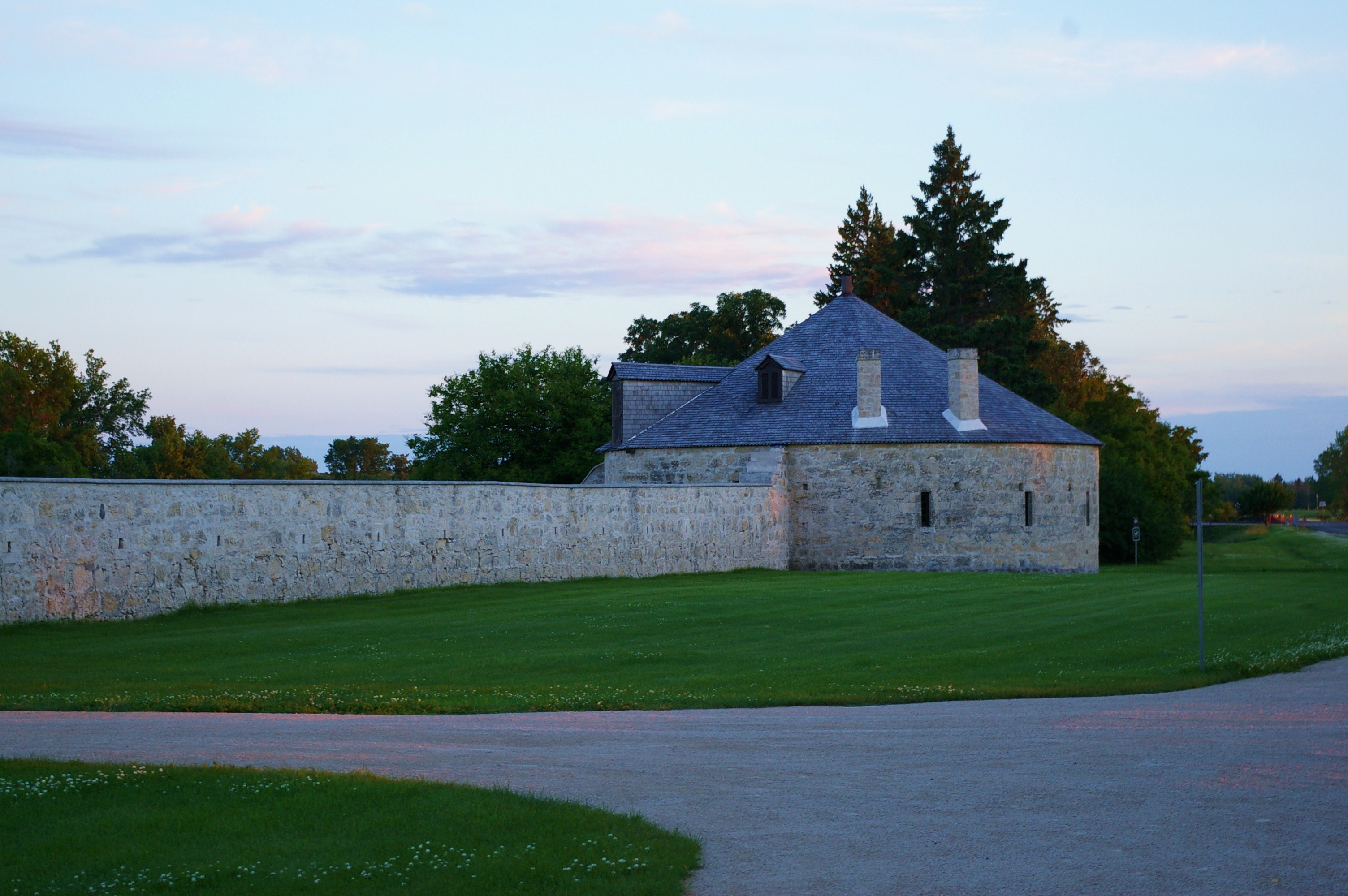 Lower Fort Garry National Historic SiteThe community which is now known as St. Andrews was brought about by the retirement of Hudson’s Bay Company surplus employees after the Hudson Bay Company amalgamated with the North West Company in 1821. The ex-employees were settled along the Red River on river lots having close neighbours in time of need, all with frontage on the red river as it was their road, and their sources of fish for food. At the time the community was called "The Rapids". It wasn't until Rev. William Cockran's stone church was consecrated and named St. Andrews by Bishop Anderson on December 19, 1849 that the area then became known as St. Andrews. This name was chosen because St. Andrew is the patron saint of Scotland and the majority of the settlers at the time came from the Orkney Islands in Scotland.
Lower Fort Garry National Historic SiteThe community which is now known as St. Andrews was brought about by the retirement of Hudson’s Bay Company surplus employees after the Hudson Bay Company amalgamated with the North West Company in 1821. The ex-employees were settled along the Red River on river lots having close neighbours in time of need, all with frontage on the red river as it was their road, and their sources of fish for food. At the time the community was called "The Rapids". It wasn't until Rev. William Cockran's stone church was consecrated and named St. Andrews by Bishop Anderson on December 19, 1849 that the area then became known as St. Andrews. This name was chosen because St. Andrew is the patron saint of Scotland and the majority of the settlers at the time came from the Orkney Islands in Scotland. In 1830 Lower Fort Garry was built with the intention of it becoming headquarters of the richest fur region in the British Empire. Although it never quite reached that status Lower Fort Garry was actively involved in the volatile political atmosphere of the red river. In 1846 to 1848 soldiers were quartered there during the free trade crisis, and again in 1870 after the red river resistance. By 1865, the Lower Fort had become an economic force in the St. Andrews area, as an industrial complex south of the fort contained a boat building yard, blacksmith shop, lime kiln, brewery and grist mill. In 1871 The signing of Treaty Number One with Ojibwa and Swampy Cree peoples in southern Manitoba took place at Lower Fort Garry. This was the first of eleven numbered treaties negotiated across the west between First Nations peoples and the Crown, Treaty Number One assisted the government in its goal of establishing immigrant agricultural settlement within the borders of southern Manitoba.
The original establishment of the local government for St. Andrews took place in 1880. The first election was held in 1881, and in 1884 the municipality was re-organized removing some of its land and became the R.M. of St. Andrews.
With the coming of the railways more immigrants arrived from farther afield, Americans, Eastern Canadians more from the British Isles as well as various nationalities from Europe. The all contributed their time, resources and energies sometimes under difficult circumstances that make this municipality what it is today.